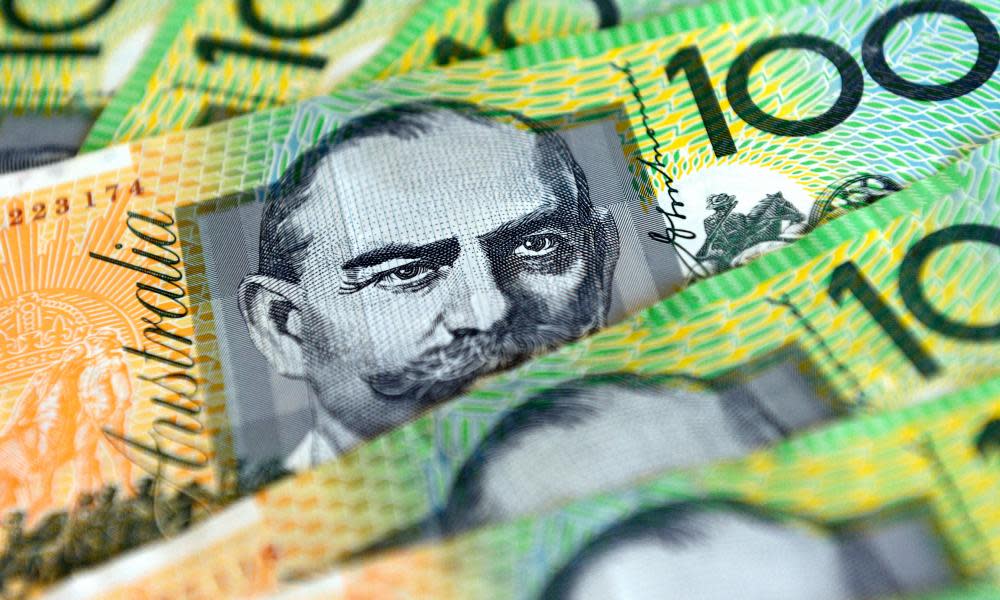RBA interest rates: Reserve Bank increases cash rate by 25 basis points in attempt to quash inflation

The Reserve Bank has lifted interest rates for a 12th time in just over a year, judging the risk of inflation staying too high for too long outweighed the added financial stress that will hurt households and businesses.
The decision to hike by another 25 basis points brings the cash rate to 4.1%, its highest level in 11 years. Economists and markets had slightly favoured no change for this month.
“Inflation in Australia has passed its peak, but at 7% is still too high and it will be some time yet before it is back in the target range,” the RBA governor, Philip Lowe, said in an accompanying statement. “This further increase in interest rates is to provide greater confidence that inflation will return to target within a reasonable timeframe.”
Lowe also left open the prospect of further rate rises if needed.
“Some further tightening of monetary policy may be required to ensure that inflation returns to target in a reasonable timeframe, but that will depend upon how the economy and inflation evolve,” he said.
Lowe repeated his mantra that the bank’s board remained “resolute in its determination to return inflation to target and will do what is necessary to achieve that”. As of April, underlying inflation was running at an annual rate of 6.5%, well above the RBA’s target range of between 2% and 3%.
Indeed, Lowe said recent data indicated “the upside risks to the inflation outlook have increased”, which prompted today’s increase.
“While goods price inflation is slowing, services price inflation is still very high and is proving to be very persistent overseas,” he said. “Unit labour costs are also rising briskly, with productivity growth remaining subdued.”
Sign up for Guardian Australia’s free morning and afternoon email newsletters for your daily news roundup
Each 25bp increase in variable rates lifts monthly mortgage payments by about $15 for each $100,000 borrowed. Since the central bank began raising rates last May, the 400bp of increases have elevated such payments by $1134 for those on a typical $500,000, 25-year owner-occupier loan, RateCity estimates.
The Australian dollar leapt on the news, jumping about half a US cent to trade recently above 66.7 US cents. Stocks extended their falls for the day, with the ASX200 benchmark index down more than 1%.
The treasurer, Jim Chalmers, sought to distance the federal government from the interest rate rise, adding “the war against inflation is far from won”.
“This rate rise today is not because of the budget and it’s not because people on the minimum wage are being paid too much and we should be really clear about that,” Chalmers told a media gathering in Canberra.
“This rate rise today is because inflation is more persistent in our economy than any of us would like, particularly in those areas that the budget has been carefully calibrated to address whether it’s rent, whether it’s energy, whether it’s out-of-pocket health costs,” he said.
Rents, a major component of the consumer price index, are rising at an annual rate of about 10% in capital cities. Energy prices are also on the rise, with the default market offers that guide retail electricity prices set to increase by about a quarter from 1 July.
The ANZ, which on Friday lifted its predicted peak in the cash rate to 4.35%, said that forecast may need to be revised higher.
“Given our own views about the outlook for productivity, unit labour costs and the stickiness of services inflation we continue to expect another 25bp increase from the RBA, most likely in August,” ANZ’s head of Australian economics, Adam Boyton, said.
“The [RBA] could well move ahead of that, however, with tomorrow’s national accounts likely to make for uncomfortable reading on the unit labour costs side,” Boyton said. “On our expectation for a peak of 4.35%, risks are likely skewed toward the RBA needing to move more than just once more.”
Related: The solutions to Australia’s housing crisis are actually quite obvious | Greg Jericho
The ACTU secretary, Sally McManus, said the RBA “seems hell-bent on crushing consumers and continues to punish those who did nothing to cause this cost-of-living crisis”, adding businesses, including the big four banks, were pushing up profits.
“This is the wrong decision,” McManus said. “An action which is designed to put more pressure on those who cannot afford it and to push up unemployment.”
The Australian Chamber of Commerce and Industry said it was a “rate rise brought to you by the ACTU”.
“The result of the ACTU’s irresponsible wages claim could not be clearer – wages growth not supported by productivity gains risks entrenching inflationary expectations and inflationary pressures,” the ACCI’s chief executive, Andrew McKellar, said.
Lowe noted in his statement the jobless rate had “increased slightly to 3.7% in April and employment growth has moderated. Firms reported that labour shortages have eased, although job vacancies and advertisements are still at very high levels”.
The RBA was also anticipating the public sector wage growth to pick up further and the annual increase in award wages was higher than it was last year. Still, “at the aggregate level, wages growth is still consistent with the inflation target, provided that productivity growth picks up”.

 Yahoo News
Yahoo News 
